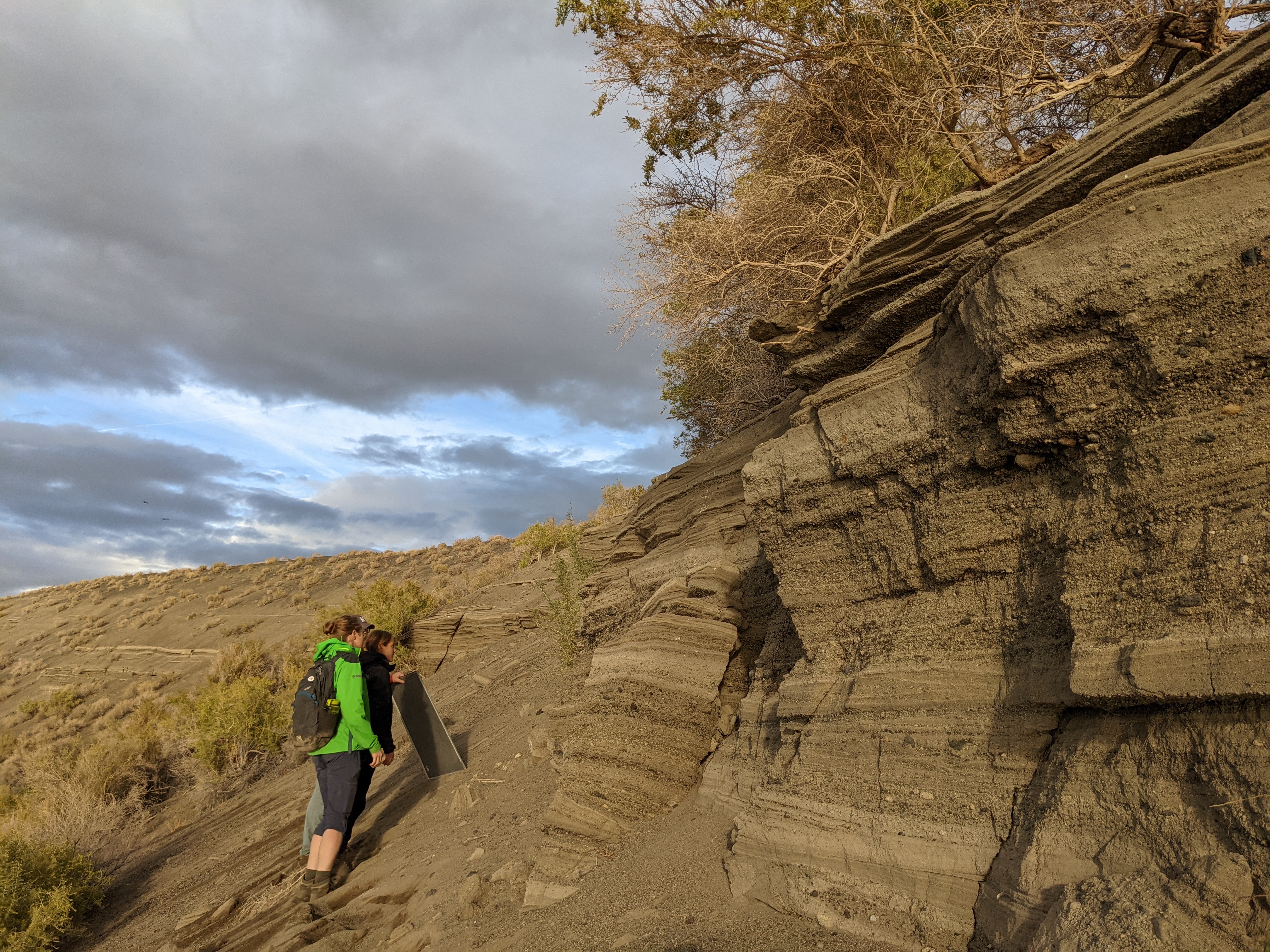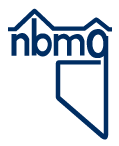NBMG Earth Science Week
Click here to sign up for the NBMG newsletter and receive information on upcoming Earth Science Week Field Trips!
Quaternary Volcanism in Lahontan Valley-Shock Waves and Boiled Fish
Location: Starts at Great Basin Science Sample and Records Library, 2175 Raggio Parkway, Reno, NV 89512, 8:00 am, Saturday, October 18, 2025. We will depart from the GBSSRL at 8:30 a.m sharp.
This year, Earth Science Week is celebrating the theme Energy Resources for Our Future. Please join us for our 2025 field trip, which will take us on a tour east of Reno to the Lahontan Valley. We will discuss geothermal energy, fairly young volcanoes and different types of eruptions, glacial Lake Lahontan, and the fascinating human history from prehistoric to present-day land use. Field trip details will be shared to those registered during the week of October 13th.
FREE PUBLIC FIELD TRIP
Click here to sign up for the ESW Field Trip. Registration ends Thursday, Oct. 16 at 5pm PST.
2025 ESW Waiver (PDF)LOGISTICS
Approximate Schedule:
8:00 am - Meet at the GBSSRL (Gold Building)
8:30 am - Depart from the Gold Building parking lot
9:45 am - Stop 1: Hazen
10:30 am - Depart Hazen
11:00 am - Stop 2: Rattlesnake Hill
11:45 am - Depart Rattlesnake Hill
12:15 pm - Stop 3: Upsal Tephra (lunch and bathroom break)
1:15 pm - Depart to Upsal Hogback
1:30 pm - Stop 4: Upsal Hogback, two short, slow walks
2:45 pm - Depart Upsal Hogback
3:15 pm - Stop 5: Soda Lake
4:15 pm - end of field trip
The field trip starts at the Great Basin Science Sample and Records Library / Nevada Bureau of Mines and Geology Publication Sales and Information Office, which we refer to as the Gold Building. To navigate to the Gold Building from downtown Reno, take US-395 North to Exit 71 for Dandini Blvd. Follow Dandini Blvd. east, veer right onto Raggio Pkwy, and the Gold Building will be on your left. The address is 2175 Raggio Parkway, Reno, NV 89512.
Please plan to arrive at the Gold Building parking lot by 8:00 am. Following some introductory comments, route plans, and discussion, we will depart by 8:30 am. We will be traveling on paved highways and dirt roads that require a little clearance. There will be short hikes at some of the stops. Because of the nature of where we are going on this trip, carpooling will be particularly important.
Since parking is anticipated to be tight in many places we will not be maintaining a caravan as we have in years past. We will provide locations for each of our stops in Google Maps. Please work your way to these stops and park smartly and wisely, where legal to do so. Once parked, please meet up with the rest of the group and once we reach critical mass, we'll begin our discussions.
Please pack a lunch and snacks, and bring plenty of water, sturdy shoes, appropriate gear, camera, hand sanitizer, and a smile.
IMPORTANT REMINDER!
Please remember to download, print out, read, and sign a liability waiver form for each attendee and bring it with you to turn in to us at our meeting place before the field trip.
If you do not have access to a printer, we will have printed copies of the waivers for you at the meeting place in the morning. Attached is a PDF of the field guide for our trip. We will be providing printed copies of this guide tomorrow morning.
INTRODUCTION
This year, the Earth Science Week field trip is focusing on Lahontan Valley geology, including Quaternary volcanoes, Pleistocene Lake Lahontan, and geothermal energy production. The first stop at Hazen will explore local geothermal resources and a Pleistocene beach ridge. Quaternary volcanism in Lahontan Valley offers a rare glimpse of three different kinds of basaltic intraplate volcanoes that are collectively important for understanding future volcanic potential. We will visit the Rattlesnake Hill volcano at the second stop, the Upsal Hogback volcano at stops three and four, and the Soda Lake volcano at the final stop. At all these stops we will see the effects and deposits of Pleistocene Lake Lahontan, and at the last stop there is evidence of the latest Pleistocene, Younger Dryas Lake.
Lahontan Valley is a geologically wonderous place in Nevada, a land of dramatic fire and water-explosive volcanoes, deep lakes, and geothermal energy. This field trip explores the geological and hydrological features that add to the Lahontan Valley mystique. Young volcanoes and inundating Pleistocene lakes invite one to imagine how things once were, such as the now bustling town of Fallon being under ~400 feet of water. At one point when Lahontan Valley was full of water, hydrovolcanic eruptions rattled the area, bursting through the now vanished lake. Thus, at times in the not-to-distant past, Lahontan Valley was dramatically different than what we see today.
Lahontan Valley was formed by extensional and translational tectonics that set the stage for the Quaternary geologic features we will visit during the field trip. The valley began forming during the Miocene Epoch and has continued to develop through today. Extensional forces stretched the valley in east-west and northwest-southeast directions, creating a basin we see today. This basin, or sink, is the lowest place that surrounding drainages flow to, including the eastern Sierra Nevada (Carson River). In the last several million years, translation (sideways movement) related to the Pacific-North American Plate Boundary to the west has propagated into Lahontan Valley; historic evidence for the lateral tectonics includes the 1954 Rainbow Mountain (M6.2) and 1954 Stillwater (M6.8) earthquakes, both of which had right-lateral strike-slip movement in addition to extension (normal fault movement), and surface rupture. The tectonic formation of Lahontan Valley set the stage for two principal Quaternary geologic events, large Pleistocene lakes that filled the valley and basaltic volcanoes that erupted on the valley floor; we will be exploring deposits left from these events today.
There is rich native American and early settler histories in Lahontan Valley and we will have the opportunity to touch on some of this history today. Lastly, Lahontan Valley is home to several renewable resources, including geothermal energy. In keeping with the American Geoscience Institute's theme for Earth Science Week 2025, Energy Resources for the Future, we will discuss some of these local resources.
MORE RESOURCES
Earth Science Week is October 12-18, 2025. For more information about educational activities during Earth Science Week, go to the national Earth Science Week website at: http://www.earthsciweek.org
"Since October 1998, the American Geosciences Institute has organized this national and international event to help the public gain a better understanding and appreciation for the Earth sciences and to encourage stewardship of the Earth."



 Home
Home